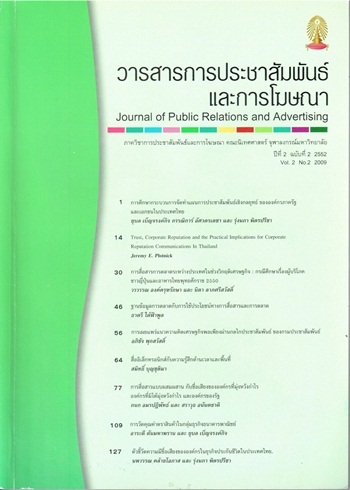การสื่อสารแบบผสมผสาน กับชื่อเสียงขององค์กรที่มุ่งหวังผลกำไร องค์กรที่มิได้มุ่งหวังผลกำไร และองค์กรของรัฐ
Main Article Content
Abstract
The purpose of the current study were to examine how to implement the integrated communications (IC) concept in profit, non-profit, and governmental organizations, and measure corporate reputation among the organizations’ consumers and stakeholders. Three organizations were studied : True Corporation Plc. (True), Thai Red Cross Society (TRCS), and Tourism Authority of Thailand (TAT). Seven in-depth interviews were conducted with organizations’ corporate and marketing communications executives. Questionnaire was then used to collect survey data from 400 organizations’ consumers and stakeholders, aged 20-50 years old living in Bangkok. the findings showed that the three organizations performed their communications tasks following the first five IC characteristic ; communication at the level of corporate brand, equal focus on consumers and stakeholders, strategic management, symmetrical communication, and building and maintenance of corporate reputation. However, the sixth one, measurement of return on communications investment, was still not implemented. The quantitative results indicated that TRCS had highest level of corporate reputation among both target group, followed by TAT and TRUE, respectively. It is noted that IC is not the only factor affecting corporate reputation; other elements are also counted, for example, organization goals, time of operation, global awareness. Finally, corporate reputation was significantly and positively related with consumers and stakeholders’ satisfaction and purchase intent on each organization.


